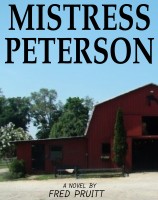|
2024-10-23 Science & Technology
|
|
What gunpowder was to the Revolution digits can be today
|
[ChroniclesMagazine] In early 2022 an undersea volcano in the south Pacific Tonga archipelago began a massive eruption. At its height the volcano disgorged 2.4 cubic miles of rock, ash, and sediment, generating the largest atmospheric explosion recorded by modern instruments and one expected to influence weather for up to five years. While the immediate cause of the eruption was a buildup of magma and gases, that buildup in turn was the result of deep shifts in the Earth’s tectonic plates—shifts that continued to produce earthquakes around the Pacific Rim this summer.
Not all volcanoes erupt so violently, and not all tectonic plate shifts produce ongoing disruptions on this scale. But when there is major resistance to the shifts, things can get a lot more disruptive.
Volcanic eruptions and plate shifts of either the violent or more gradual kind are a good metaphor for the radical changes of both American Revolution and for our political situation today: social, economic, and political grievances build up and, if not addressed, explode. Geophysical pressures arise from the deep dynamics of the Earth over millions of years. Our social and other pressures arise more locally but are influenced by shifts in technology that can, at times, verge on tectonic impact. Looking back at history, we can see how certain technological changes were essential in laying the groundwork for the ideological changes that followed. Such may be the case today as well.
To see the role of technology in the American Revolution, step back all the way to 1215. After the collapse of the Roman Empire a feudal system slowly emerged in Europe. Kings and aristocrats began to consolidate power that became inherited rather than earned generation to generation. But in England a group of powerful barons sought to place boundaries around royal power. The result was the Magna Carta, a document signed by the unpopular King John at Runnymede at the insistence of those rebel barons. That agreement limited arbitrary imprisonment, established church freedom from royal control, and guaranteed access to swift and impartial justice in the event of disputes. In essence the Magna Carta placed law and legal processes above the desires and power of the kings. At the same time, the English Parliament was established, giving representatives of various regions a formal role in lawmaking.
… It wasn’t easy. The colonial militias were up against a hardened, trained, professional army. By the winter at Valley Forge many had given up, and the situation was dire. But the leadership and, as Thomas Fleming shows in The Strategy of Victory the military strategy, of George Washington finally prevailed. How did that happen?
Two factors were key. First, the Declaration of Independence established a foundational position for the Revolution. This wasn’t simply a political dispute or a power play. What was at stake were the core rights inherent in humans as a result of Nature and Nature’s God: life, liberty, the pursuit of happiness. These were not things the Crown or Parliament could bestow or withhold, but inherent rights that demanded recognition and respect.
But there was a second factor that is much less well recognized, namely a tectonic shift in military technology that had been underway for two centuries. As Geoffrey Parker notes in The Military Revolution: Military Innovation and the Rise of the West, 1500-1800, the adoption of gunpowder by the West fundamentally changed the nature of combat from what had been the norm for a millennium. Cannons on ships and ashore brought kinetic energy at a distance equivalent to many human attackers. Moreover, cannons could be towed by horses across long distances using only a few troops, positioned as needed, fired, and then moved again.
But even more tectonic was the development of individual firearms. Muskets rapidly gained widespread use among ordinary people. Along with the development of dog breeds such as Poodles, muskets allowed hunting and the retrieval of migratory waterfowl and other birds, thereby enhancing diets greatly—allowing people to grow in strength and independence. By the time of the Revolution many colonials owned firearms and knew how to use them.
The colonials began to employ their muskets using guerilla tactics honed by the Iroquois and other native tribes. Small groups of colonials attacked British troops, then slipped away into the woods and surrounding terrain. The resulting attrition of British forces made Washington’s larger battle encounters possible.
… Just as the colonials experienced a major technological shift when local people and communities acquired the means to present an unexpected challenge to the established power of their day, so, too, do we see a similar pattern emerging today. Now the same technology shift that has empowered an increasingly overt surveillance and control ecosystem has the potential to empower effective resistance to that power mass. Communication and computing technology allow people with shared interests and values to connect at a distance, to engage in commerce with one another without the intermediaries of large companies, to exchange insights and encouragement, and even to bypass centrally controlled currencies and other financial mechanisms.
The battle will not be easy and victory surely is not guaranteed. But there are several factors in our favor. First, a growing number of tech entrepreneurs see the danger and are pushing back—not only Elon Musk via X but also others who now are openly supporting and funding a coalition centered on the Trump-Vance election ticket. Groups like Turning Point USA are actively organizing ordinary citizens to vote. The move by Robert F. Kennedy Jr., his running mate and tech entrepreneur Nicole Shanahan, and former Democrat Tulsi Gabbard to endorse a unity ticket around Trump and Vance offers the possibility of setting aside policy differences in order to focus on an existential issue, the preservation of liberty. Principled journalists have left the mainstream media and are reaching viewers and readers via SubStack and other venues. Black leaders are openly aligning with this unity effort, acknowledging that the-powers-that-be have not aided their communities.
If we win this fight, we will see that rebuilding with new tech and new tools will open major possibilities in education, finance and more. To get there, however, we absolutely must set aside all tangential policy differences and focus instead on what is key for flushing out and cutting back the Beltway ecosystem. Be very clear: That ecosystem will not go down without a fight to the finish. We are very close to a Valley Forge winter of our own. But the means are there for potential victory if we keep our eyes on the key. 
|
Posted by Omoluger Ulising2352 2024-10-23 00:00||
||
Front Page|| [11143 views ]
Top
|
|
19:53 badanov
19:44 trailing wife
19:37 trailing wife
19:27 Rex Mundi
19:10 Rambler
18:30 DooDahMan
18:28 DooDahMan
18:12 Matt
17:45 trailing wife
16:37 Gleng Whaick2262
16:35 Regular joe
15:22 Super Hose
15:13 Silentbrick
14:47 SteveS
14:37 Vortigern Speaking for Boskone4685
14:23 swksvolFF
14:22 SteveS
13:55 Thing From Snowy Mountain
13:50 swksvolFF
13:48 swksvolFF
13:42 badanov
13:35 ed in texas
13:35 Elmomoter Mussolini9149
13:32 Elmomoter Mussolini9149









|










